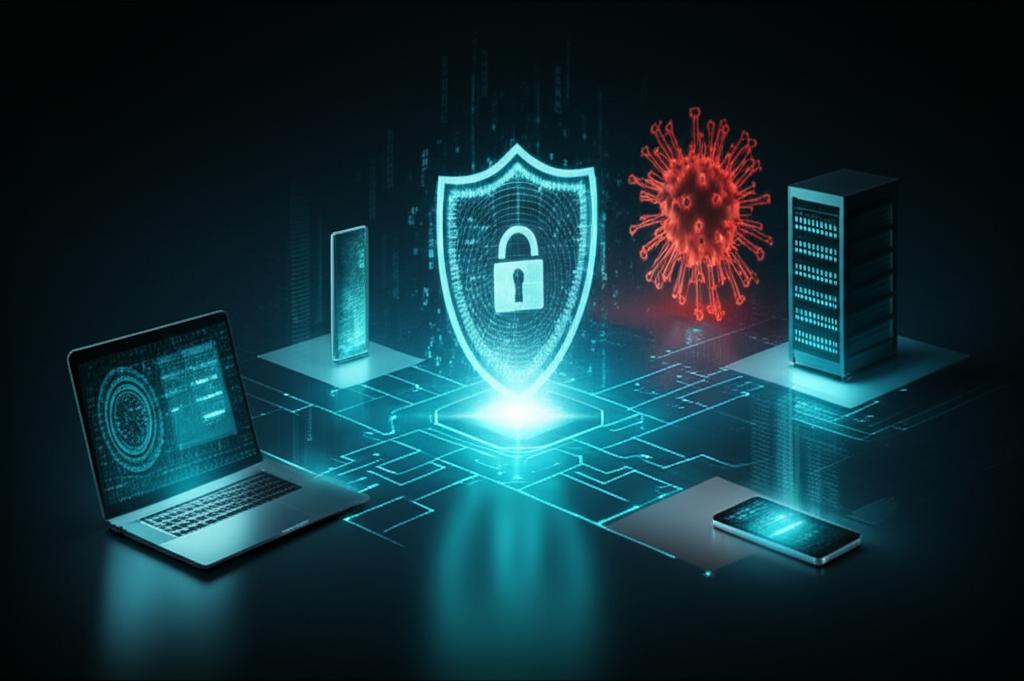Mastering Endpoint Security Management: Your Ultimate Guide
What is Endpoint Security Management?
In today’s interconnected digital landscape, organizations face an ever-growing barrage of cyber threats. From sophisticated ransomware attacks to subtle phishing attempts, the perimeter of traditional network security is no longer sufficient. This is where Endpoint Security Management steps in as a critical defense mechanism. But what exactly is it, and why is it so indispensable?
Defining Endpoint Security Management
Endpoint Security Management (ESM) refers to the process of protecting an organization’s endpoints—devices such as laptops, desktops, mobile phones, servers, and IoT devices—from cyber threats. It’s a comprehensive approach that involves identifying, monitoring, and securing all entry points into a network or system. Unlike traditional security, which primarily focused on the network perimeter, ESM acknowledges that every device accessing the network is a potential vulnerability that needs robust protection.
Why is Endpoint Security Management Crucial?
The significance of effective Endpoint Security Management cannot be overstated. Here’s why it’s a cornerstone of modern cybersecurity strategies:
- Expanding Attack Surface: With remote work, BYOD policies, and a diverse range of devices, the number of potential entry points for attackers has exploded.
- Sophisticated Threats: Modern malware, zero-day exploits, and advanced persistent threats (APTs) often bypass traditional firewalls, making endpoint-level detection and response vital.
- Data Protection: Endpoints are where sensitive data is often accessed, processed, and stored. Securing them directly protects valuable organizational information.
- Compliance Requirements: Many industry regulations (e.g., GDPR, HIPAA, PCI DSS) mandate robust endpoint protection to safeguard personal and financial data.
- Business Continuity: A compromised endpoint can lead to network-wide breaches, data loss, and significant operational disruption. ESM helps prevent these costly incidents.
Key Components of Effective Endpoint Security Management
A robust Endpoint Security Management strategy typically integrates several technologies and practices:
-
Antivirus and Anti-Malware Software
The foundational layer, designed to detect, prevent, and remove malicious software like viruses, worms, Trojans, and ransomware using signature-based and heuristic analysis.
-
Endpoint Detection and Response (EDR)
EDR solutions continuously monitor endpoint activity, collect telemetry data, detect suspicious behaviors, and provide the tools for security teams to investigate and respond to threats in real-time.
-
Mobile Device Management (MDM) / Unified Endpoint Management (UEM)
MDM focuses on securing and managing mobile devices, while UEM extends this to all endpoint types (laptops, desktops, IoT). These tools enforce security policies, manage applications, and facilitate remote wipe capabilities.
-
Patch Management
Ensuring that all software and operating systems on endpoints are regularly updated with the latest security patches to fix vulnerabilities that attackers could exploit.
-
Firewall Protection
Endpoint firewalls control incoming and outgoing network traffic on individual devices, preventing unauthorized access and communication.
-
Data Encryption
Encrypting data at rest and in transit on endpoints protects sensitive information even if a device is lost or stolen.
-
Web Filtering and Application Control
Restricting access to malicious websites and controlling which applications can run on endpoints reduces the risk of malware infection and unauthorized software usage.
-
Intrusion Prevention Systems (IPS)
Monitoring network and system activities for malicious or unwanted behavior and automatically taking action to block or alert on such activities.
Benefits of a Strong Endpoint Security Management Strategy
Implementing a comprehensive Endpoint Security Management framework yields numerous benefits:
- Enhanced Threat Detection: Proactive identification and mitigation of threats before they can cause significant damage.
- Improved Incident Response: Faster investigation and containment of security incidents, minimizing downtime and data loss.
- Reduced Risk: A significantly smaller attack surface and fewer vulnerabilities for cybercriminals to exploit.
- Regulatory Compliance: Easier adherence to industry regulations and data protection laws.
- Operational Efficiency: Centralized management simplifies security operations and policy enforcement across diverse endpoints.
Challenges in Endpoint Security Management
While essential, managing endpoint security comes with its own set of challenges:
- Complexity: The sheer variety of devices, operating systems, and applications can make unified management difficult.
- Alert Fatigue: Security teams can be overwhelmed by the volume of alerts generated by endpoint security tools.
- Evolving Threats: Attackers constantly develop new techniques, requiring continuous updates and adaptation of security measures.
- User Behavior: Human error remains a significant vulnerability, emphasizing the need for ongoing security awareness training.
Conclusion
In an age where the endpoint has become the new perimeter, effective Endpoint Security Management is no longer optional—it’s imperative. By implementing a layered defense strategy that encompasses detection, protection, and response across all devices, organizations can significantly bolster their cybersecurity posture, safeguard valuable assets, and maintain business continuity against the ever-present and evolving threat landscape.







